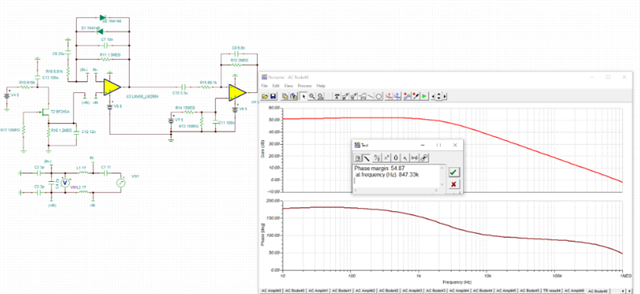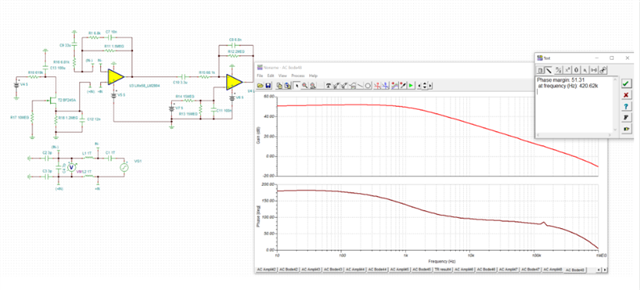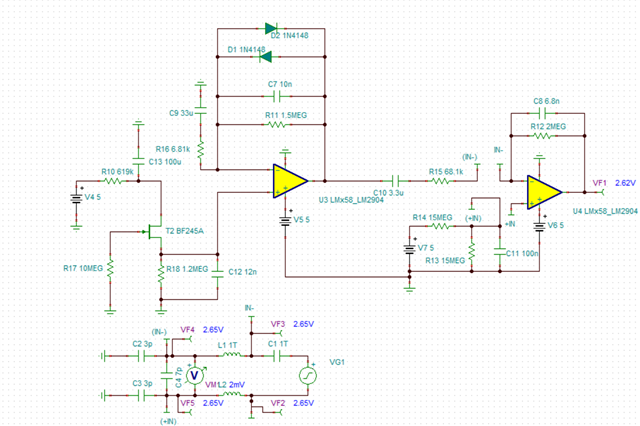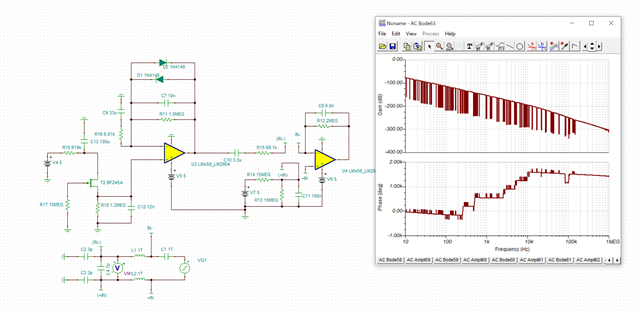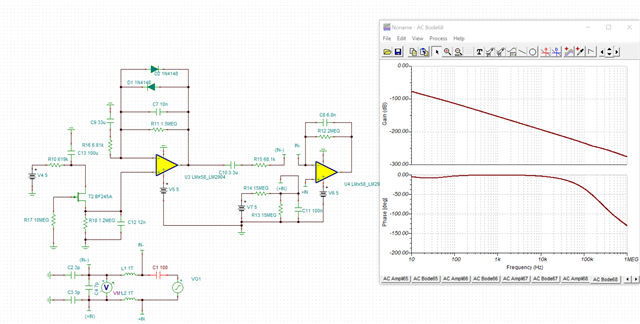Other Parts Discussed in Thread: LPV802
Hi,
I have built a PIR AFE circuit closely based on this reference design.
The differences are as follows:
- using LM358AMX/NOPB (dual amp in SOIC package)
- reduced second stage gain to meet input requirements for ADC circuit used in leiu of comparators
- Vs = 5V
- Using LHI 958 PIR sensor
For the most part, the design behaves as expected, but occasionally I'm noticing it begins to oscillate (sometimes due to SMT issues) so I believe it's unstable.
I've attached 3 simulations done based on this e2e post which yielded the following results:
Simulation A: Original circuit with LM358AMX/NOPB - not good
Simulation B: Change PIR bias resistor to 47k with LM358AMX/NOPB - phase margin = 32deg, unstable
Simulation C: Original circuit replacing opamp with LPV802 - stable with 52 deg phase margin:
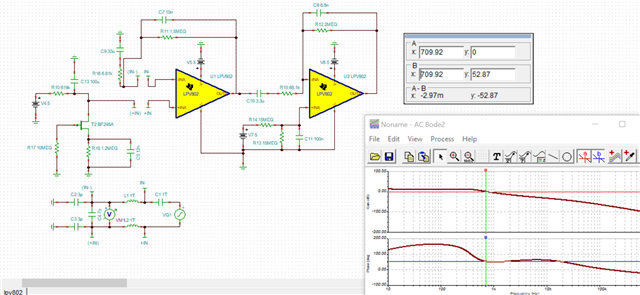
Can you help me understand which specific opamp parameters are causing these different behaviors? If I need to switch to a different amp, is there one that is footprint compatible you would recommend?
Best,
Emma


